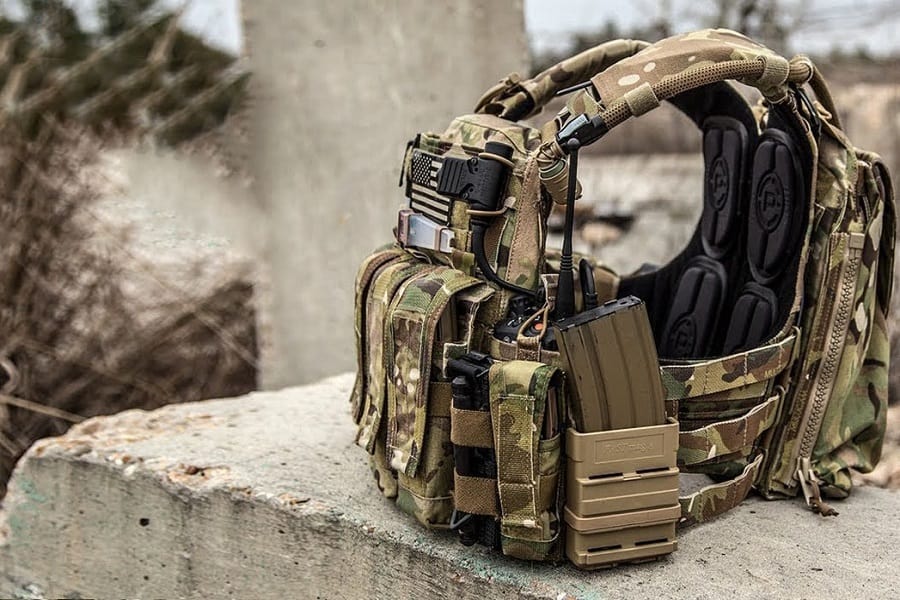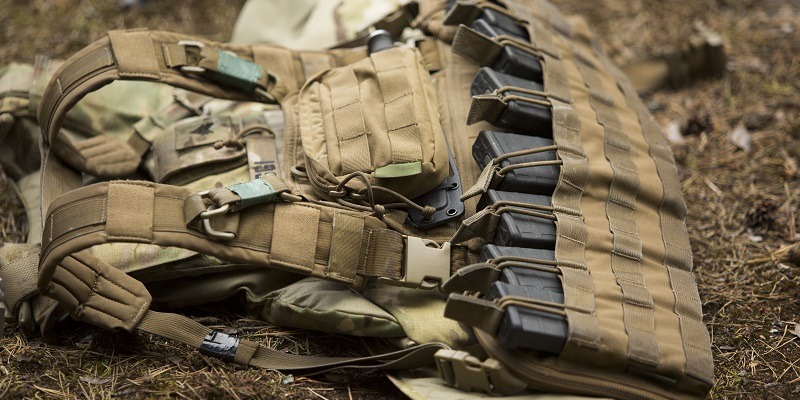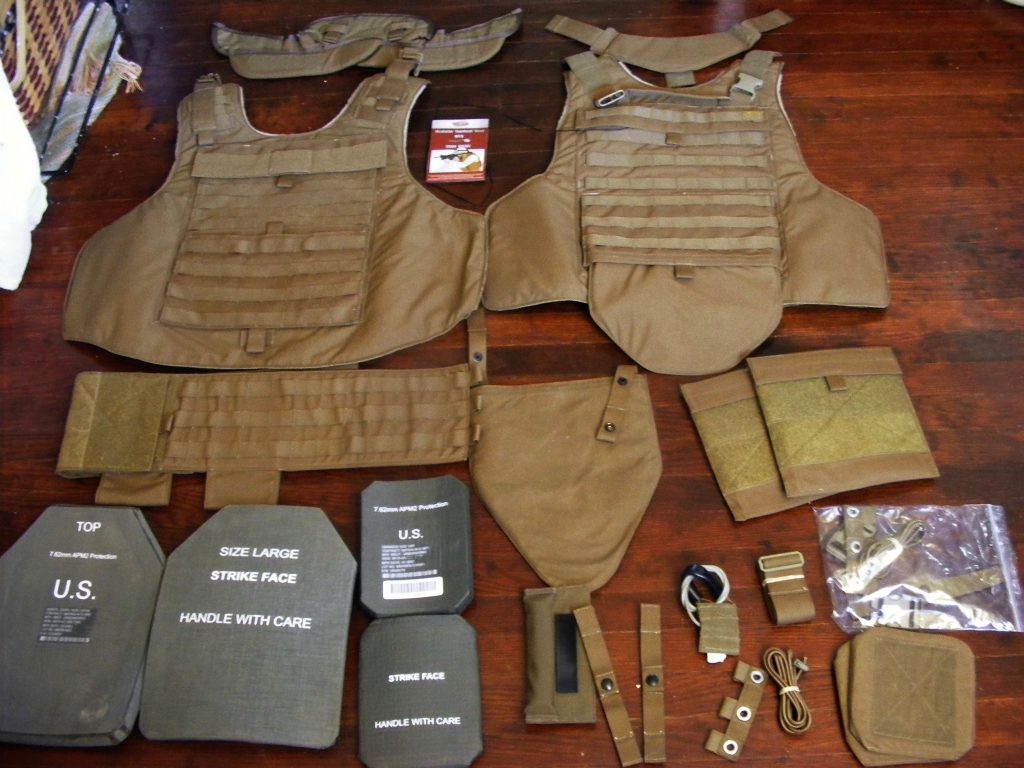Modern body armor comes in many different forms. Modern body armor can be tailored to meet the requirements of virtually any mission profile. Body armor can provide protection against ballistic, melee, or even spiked weapons. This article will cover the very basics of understanding modern bulletproof vests.
Plate carriers, plate carriers, plate carriers, plate carriers and plate carriers
The wearer himself holds the armor plate or soft armor (or a combination) and then fixes them to the body. There are countless different options for armor wearers. It is they who make the protective vest suitable.
The plate carrier can be designed to hold front, back and side plates, as well as soft ballistic inserts. They can also be designed to have additional attachments, including protective soft armor for the neck, shoulders and groin.

The size and method of wearing body armor
Correct wearing of the armor protection system is mandatory. Many people who wear armor every day have no idea that they are wearing it incorrectly, leaving themselves vulnerable. The top of the front plate should be in line with the top of the sternum. When the plate is positioned this way, it will provide the most coverage of your vitals.
The top of the back plate should be exposed approximately at the level of half of the shoulder blades. This provides the most coverage front and back and ensures that it protects everything that the front plate protects.
At first, the side plates may seem unnecessary to you. However, they are extremely valuable. They should be as high as possible in your plate carrier without restricting your movements. Most modern carriers have adjustable side pockets. Raise the height of the side summaries for the plates so that the plates can protect your lungs.
As far as sizes go, you’ll want to purchase media that matches your plate size. If you use medium plates (M), choose a plate carrier in the same size Medium. You don’t want your slabs to jump or slide around inside the slab carrier during use.
If you are concerned about the plate carrier fitting too loosely or too tightly to your body, you can always buy a different size cumberband belt, of course if your plate carrier allows for this (the vast majority of brand name body armor does). The cummerband belt will ensure that the vest itself remains snug against your body.
Types and styles of plate carriers (body armor). Nowadays, there are many types of bulletproof vests on the market. The market is so saturated with tactical gear that it can be difficult to determine the type of plate carrier system that fits your mission needs.
Hidden type
These carriers are made minimally bulky and light, but with consideration to get the job done: they keep the armor as close to the body as possible. However, this does not mean that they are of low quality.
They are often used in two different situations. When designed for concealed carry, they are built with a low profile and placed under the wearer’s clothing.
This is ideal for professionals such as bodyguards or undercover agents who want to blend in with their surroundings. A bulky vest under or over clothing would be extremely noticeable. Although they often have a low profile (low visibility), the armor inside can provide full ballistic protection. Sometimes VIPs moving around on high alert can be seen wearing hidden armor over their clothes. Police officers also often wear concealed body armor, usually under their uniforms.
Another advantage of hidden armor is that the user can put on top of it unloading equipment. The user can hide the armor or wear it over clothes and have a similar set to a bulletproof vest with the MOLLE system. If the user decides they don’t need the armor at all during that time frame, they can remove it and still have access to all the other gear they have on them, such as summary stores, first aid kits, and more.

Plate carrier with MOLLE system
The MOLLE system is a modern equipment fixation system. It has been designed to simplify the process of attaching accessories to your armor protection system, while providing excellent retention and ease of use. It’s similar to the old A.L.I.C.E. system, but without all the metal clips. The tile is covered with slings, and the summation has at least one vertical sling on the back, as well as several horizontal straps sewn on the back as well. The sling usually has a piece of plastic inside for rigidity. When installing the accessory, the sling must be woven through the slings on the vest and the slings on the accessory. The result should be that the accessory does not detach from the carrier, even if the fastener is not locked.
Today, MOLLE body armor makes up a large percentage of the market. Some of these MOLLE vests can be so thin that they can also be hidden under clothing. Others are designed for extreme loads and are also lightweight and provide excellent mobility.
Body armor quick release system
A common feature sought among tilers is a quick release from it. These media are often designed for use in and around confined spaces, such as water transport and land vehicles. In the event that the user becomes trapped in an accident or fight, or in water, the vest can be quickly and easily dropped to escape the trap.
Some tilers tend to be much more specialized than the average consumer body armor. They are intended for military operations in the combat zone. These tilers are usually bulky and allow you to fasten the periphery. Most often you see these body armor with shoulder, throat and groin protection.
These carriers are bulky and extremely heavy. They excel at what they do. An impressive number of soldiers died from arterial wounds. Shoulder protection, throat protection and groin protection are designed to protect these arteries in some of the most vulnerable areas.
Outside of peripheral protection, these body armor generally function similarly to other plate carriers. Some models, such as the IOTV, have quick release systems and offer improved internal support, cushioning and breathability. They also tend to offer a variety of bulky systems so that the user can customize their gear to make it comfortable and functional for the user.
Used or new?
Many retailers offer used vests for the average consumer at a deeply discounted price. This price makes these bulletproof vests extremely attractive to budget shoppers. Most of these second-hand dealers insist that these vests are as good as new, especially if you compare the original for the US Army, compared to some Htak or China. However, used gear, even in the best shape, can be unreliable.
If the buyer expects to put his life in the hands of a bulletproof vest, it is strongly recommended to purchase a new quality BRAND plate carrier. Often the manufacturer’s warranty is not transferred to the previously used. In any case, whether the user buys a new or used vest, it is strongly recommended that regular inspections of their equipment are carried out to ensure that the stitching is intact and that there are no new tears or holes that could compromise the reliability of the plate carrier.
Armor and ballistic protection
First, we have armor plates or soft panels. Soft armor is generally designed for smaller or more specialized threats. Plates are designed for more powerful munitions and more advanced threats. These are what actually stop the threat, and can usually be quickly removed from the body armor and repositioned in another (eg if you’re using a concealed and external plate carrier).

Hard armor
Hard armor is capable of providing protection against all but the most advanced ballistic threats common today. Aside from threats designed specifically to defeat armor protection, there are very few branded armor plates that aren’t designed to provide adequate protection. With this in mind, it is imperative that the user before purchasing be sure to review the comparison tables of the respective armor protection levels to understand what the plates can and cannot do.
Armor protection rating of armor plates (USA)
Armor plates are rated by the National Institute of Justice (NIJ) as typically Level III or IV. It is important to note that the NIJ does not support manufacturer labeling as “lightweight” or “+”. They are purchased at your own risk.
Armor plates are usually rated only at levels III and IV. Tier III stops all threats with cartridges up to 7.62 with FMJ bullets. In the case of .223 or 5.56 ammunition, if the bullet has a lead core, a level III plate will suffice
If the user expects to be likely to be hit by steel core ammunition or anything with armor piercing bullets, it is highly recommended to purchase tier IV armor. Armor-piercing bullets require ceramic or metal outer or inner segments to stop such bullets. Most of the Level IV labels in the NIJ-approved registry contain these features.
Armor plate materials
Armor plates can be made from a number of different materials. As long as they are on the approved registry, they are guaranteed to stop the assessed threats. The advantages of the materials from which they are made are determined by the price of the armor plate and its weight.
Ceramic and steel plates are relatively similar in weight per plate and can be found in Tier IV ratings. The advantage of steel plates is that they are generally much thinner than ceramic plates, and the cost is generally much less. The steel coating can give a ricochet fragment, which is caused by fragments when hitting the slab. Fragmentation can end up hurting you too.
Steel plates are also recommended for use with trauma packs, which can help absorb the energy of a bullet entering the armor, as well as protect against dents in the plate that may occur.
Ceramic plates have many of the same properties as steel plates, but do not ricochet or dent. Ceramic plates provide excellent protection against multiple hits, but the downside is that they do not withstand multiple precision hits in the same spot and tend to be more expensive. If you’re not looking for the ability to withstand multiple hits, you can find plenty of other interesting value propositions on the market.
Kevlar plates are excellent and time-tested against ballistic threats. The downside is that Kevlar alone may not be sufficient against a level IV threat. Kevlar simply cannot withstand armor-piercing ammunition without inserts or a special coating. Kevlar is often used in conjunction with plates (ICW).
Soft armor
Soft armor works much like hard armor, except that it comes in flexible panels and protects against smaller threats such as pistol-caliber ammunition. Soft armor cannot be rated for protection against rifle caliber ammunition, as the highest protection for soft armor is IIIA. Flexible armor simply isn’t tough enough to withstand the impact of high-powered ammunition. That being said, if the mission profile does not involve rifle-caliber ammunition as an immediate threat, or if the user requires additional flexibility and mobility and lighter, flexible soft armor, there is no need for hard plates.
Armor protection rating of soft armor (USA)
Soft armor comes in one of three levels. IIA is the lowest rating, followed by II and then IIIA. IIA armor is designed to stop only 9mm and .40 bullets and is actually pretty hard to find. Level II armor stops more powerful 9mm and .357 bullets.
Tier II armor make most IIA armor obsolete. Tier II armor doesn’t cost much more than IIA and isn’t much heavier. Given the choice, the extra protection of tier II armor is worth it. Level IIA armor stops pistol caliber ammunition up to .357 Sig and .44 Magnum. IIIA is also sometimes found in armor plates.

Materials
Soft armor from well-known, proven brands is usually made of materials such as Kevlar fabric, Goldflex and Twaron. Goldflex is a non-woven laminated version of Kevlar fabric, and Tvaron is similar to Kevlar, but is “para-aramid” rather than “aramid” Kevlar.
Waistcoats
Vests against cold weapons
Such vests protect against attacks from knives, swords and anything with a sharp edge. They have both hard and soft armor and are highly specialized equipment. Ballistic armor may not protect against a propulsion attack due to the damage mechanism. Check the armor rating with the manufacturer to determine if the plates you already have are rated for protection against barbed slashing damage.
Vests from studded weapons
These vests are even more specialized than bladed vests. None of the armor is designed to stop the threat of spike damage unless the manufacturer specifically states so. Almost all such vests are made in soft armor thanks to the specialized weaving required to successfully stop such a threat.
Maintenance
Be sure to perform routine inspections and maintenance on your armor and carrier to prevent malfunctions in the field when you need your armor the most. Make sure the plates are checked for damage or expiration dates. If the plates have visible damage or are outdated, they must be replaced as soon as possible.
In the world we live in today, armor is just as important to store and have in your personal possession as a firearm. First responders to a threat of all kinds must have armor protection and must understand not only how to use the armor they have, but also why each type of armor is effective at its level.
